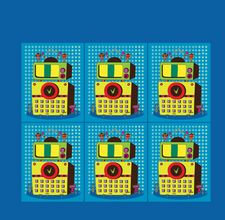Efficient clipboard with CopyQ
Extended Memory

Productive work processes typically require extensive use of copy and paste. CopyQ expands your desktop's short-term memory, giving you quick access to previously copied content.
The clipboard is an extremely valuable tool for creating documents and writing computer code, as well as copying text, images, and files. But, what if you need to interrupt your work to continue it days later? Wouldn't it be nice to have access to material previously copied to the clipboard?
CopyQ [1] converts the standard clipboard into an archive of content from previous copy commands that you can access at any time. For this to happen, CopyQ provides a searchable and editable copy history that includes text, photos and drawings, and command lines, in addition to plain text copied within a console session.
CopyQ is written in the Qt programming language and docks in the system panel when launched; from there, you can access previously copied content with just a few clicks (Figure 1). To make the job even easier for experienced users, CopyQ supports various keyboard shortcuts that you can set via the program's settings.
[...]
Buy this article as PDF
(incl. VAT)
Buy Linux Magazine
Subscribe to our Linux Newsletters
Find Linux and Open Source Jobs
Subscribe to our ADMIN Newsletters
Support Our Work
Linux Magazine content is made possible with support from readers like you. Please consider contributing when you’ve found an article to be beneficial.

News
-
Linux Mint 22.3 Now Available with New Tools
Linux Mint 22.3 has been released with a pair of new tools for system admins and some pretty cool new features.
-
New Linux Malware Targets Cloud-Based Linux Installations
VoidLink, a new Linux malware, should be of real concern because of its stealth and customization.
-
Say Goodbye to Middle-Mouse Paste
Both Gnome and Firefox have proposed getting rid of a long-time favorite Linux feature.
-
Manjaro 26.0 Primary Desktop Environments Default to Wayland
If you want to stick with X.Org, you'll be limited to the desktop environments you can choose.
-
Mozilla Plans to AI-ify Firefox
With a new CEO in control, Mozilla is doubling down on a strategy of trust, all the while leaning into AI.
-
Gnome Says No to AI-Generated Extensions
If you're a developer wanting to create a new Gnome extension, you'd best set aside that AI code generator, because the extension team will have none of that.
-
Parrot OS Switches to KDE Plasma Desktop
Yet another distro is making the move to the KDE Plasma desktop.
-
TUXEDO Announces Gemini 17
TUXEDO Computers has released the fourth generation of its Gemini laptop with plenty of updates.
-
Two New Distros Adopt Enlightenment
MX Moksha and AV Linux 25 join ranks with Bodhi Linux and embrace the Enlightenment desktop.
-
Solus Linux 4.8 Removes Python 2
Solus Linux 4.8 has been released with the latest Linux kernel, updated desktops, and a key removal.

